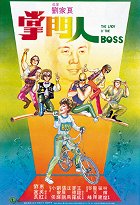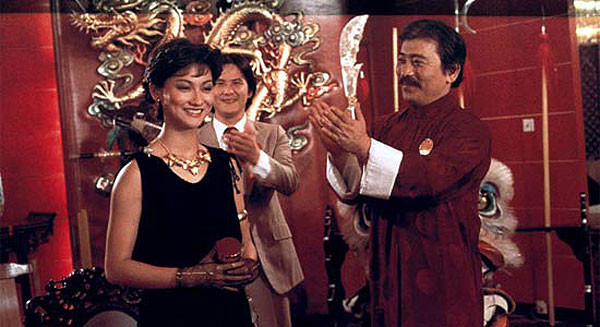Directed by:
Chia-Liang LiuScreenplay:
Chia-Liang LiuReviews (1)
The grandmaster of martial arts movies, Lau Kar-Leung, tried to push back against his own sense of obsolescence in the rapidly changing environment of Hong Kong cinema at the beginning of the 1980s, when it was taking on a modernist hue. Though Lau had made two grandiose masterpieces of the genre – The 36th Chamber of Shaolin and Dirty Ho – in the late 1970s, young viewers had lost interest in his style of traditionally conceived costume stories that thematise the diligence and effort required to eventually master the martial arts. His projects significantly lagged behind their contemporary competition, which in some cases could boast box-office receipts up to ten times greater than those of Lau’s films. The Lady Is the Boss comes across as a commissioned work motivated by pressure from the management of his home studio, Shaw Brothers, to try something set in the present and containing trends that were fashionable at the time. The result is a work that expressively demonstrates Lau’s effort to somehow contend with the innovations while also saving face. So, here we have a story about a traditional martial arts school that the founder’s daughter, played by Kara Hui, comes to visit from America. She trains in an aerobics outfit and ignores other traditions, distracting the hitherto well-disciplined students and, mainly, disrespecting the wisdom and experience of the previous master, portrayed by Lau himself. Together with this, there are lines literally expressing the need to bring martial arts to today’s youth and present them in the context of young people’s interests and fashion trends. Though this may be reminiscent of the ethos of The 36th Chamber of Shaolin involving the need to bring martial arts out of closed schools and monasteries and to the common people, there is a certain bitterness in the rendering here, which is quite possibly due to Lau’s dealings with the studio heads. The film certainly cannot be denied its effort at imaginative choreography in the fight scenes with dance choreography at a discotheque or with BMX bikes on a construction site. However, these also seem forced. In fact, viewers will better remember the more imaginative passage from the nightclub with cameras than these passages highlighted in the promotional materials. Furthermore, Lau cannot refrain from self-gratification, so the whole film culminates with a display of traditional styles and, mainly, Lau himself, as the privileged heroine gets taught a lesson and has to dutifully bow down to the older master and his skills. After this bit of chasing fads, Lau was more than happy to return to costume productions, which, however, definitively faded away with the collapse of Shaw Brothers two years later. Only the absence of his faithful employer forced Lau to again make films set in the hated present (e.g. the diptych Tiger on the Beat and Aces Go Places V, both of which were excellent, though stylistically atypical in the context of contemporary trends). But after the success of those later films, he gladly returned to romanticised costume projects recalling the good old days. Despite its considerable potential, The Lady Is the Boss, remains a peculiar anomaly and an apparently unwanted child in Lau’s otherwise fantastic creative career. Yuen Wo-Ping’s Mismatched Couples from the same period is rather better at showing how to creatively combine kung-fu choreography and the fashion trends of the 1980s in a tremendously entertaining way.
()
(less)
(more)

